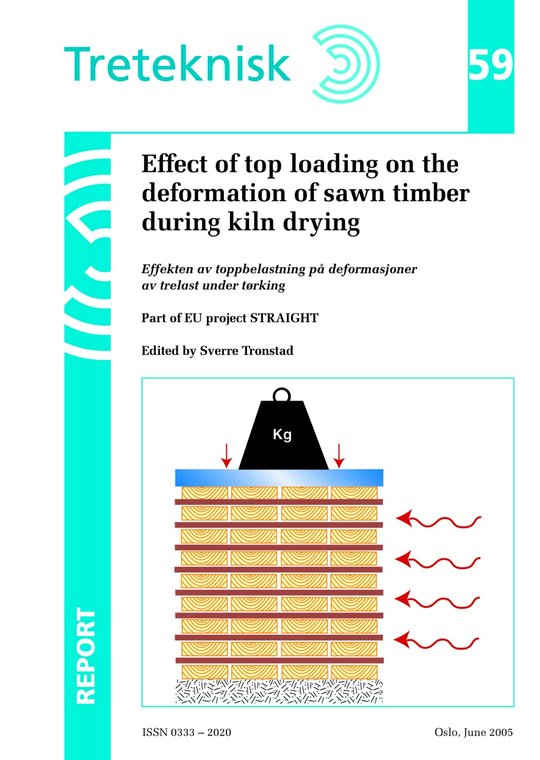59: Effect of top loading on the deformation of sawn timber during kiln drying (EU project STRAIGHT)
Effekten av toppbelastning på deformasjoner av trelast under tørking
Redaktør: Sverre Tronstad
Rapport 59, 2005
97 s.
200,- (Gratis for medlemmer)
Last ned
Summary
Deformation during drying is one of the most important reasons for downgrading timber.
In this EU funded project, STRAIGHT, nine research institutes in eight European countries have studied different methods to minimise the distortion of sawn timber occurring during drying and service conditions. The study has been divided into several work packages with one to nine partners, each with one responsible institute.
This report presents the results from studies on top loading of timber during drying as a method of reducing distortion. Bundesforschungsanstalt für Forst- und Holzwirtschaft (BFH), Building Research Establishment (BRE), Technical Research Center of Finland (VTT) and Norsk Treteknisk Institutt (NTI) as coordinator, have taken part in the study.
The main goal of the study was to find the correlation between the level of top loading and the degree of deformation of sawn timber and to study new approaches for top loading.
All tests were run with 50 mm x 100 mm battens sawn from 150 mm - 170 mm diameter logs of Norway spruce (Picea abies) and Sitka spruce (Picea sitchensis). Due to the high amount of juvenile wood with large fibre angle in the centre of the log, this dimension is highly prone to distortions.
The tests were run under industrial conditions with full timber lengths and under laboratory conditions with shorter timber lengths. Totally, more than 50 tests were run with different top load levels and compared to the same number of reference tests with no top load.
The main conclusion from the tests is clear - the top load has considerable influence on all typical deformations in timber, i.e. twist, bow and spring, with twist as the most pronounced. The deformations were reduced down to about 30 % for twist and 40 % for bow and spring. This again can partly be reduced by the spring back effect, if the timber after drying is stored for longer periods without pressure.
For all these types of deformations, the optimal top load for the tested dimension 50 mm x 100 mm spruce was app. 600 kp/m² for the industrial tests, for the laboratory tests, a bit higher. Increasing the load above these levels had only marginal positive effect on the deformations.
The results also reveal the benefits of smaller sticker distances and the importance of proper alignment of the stickers.
The study finishes with a discussion on pros and cons of different methods of applying the top load, concluding with a preference for a pneumatic or hydraulic system, especially for larger compartment kilns with several packages in the height. In addition to the possibility of controlling the top load level, the “dynamic” top loading will also prevent tilting of packages by proper top load and stop the air leakage above the packages.
The results maintained in the tests are representative for Norway spruce and Sitka spruce of the dimension 50 mm x 100 mm. Other species, dimensions and timber with other sawing patterns will behave differently as to distortions and will have different optimal top loads.
